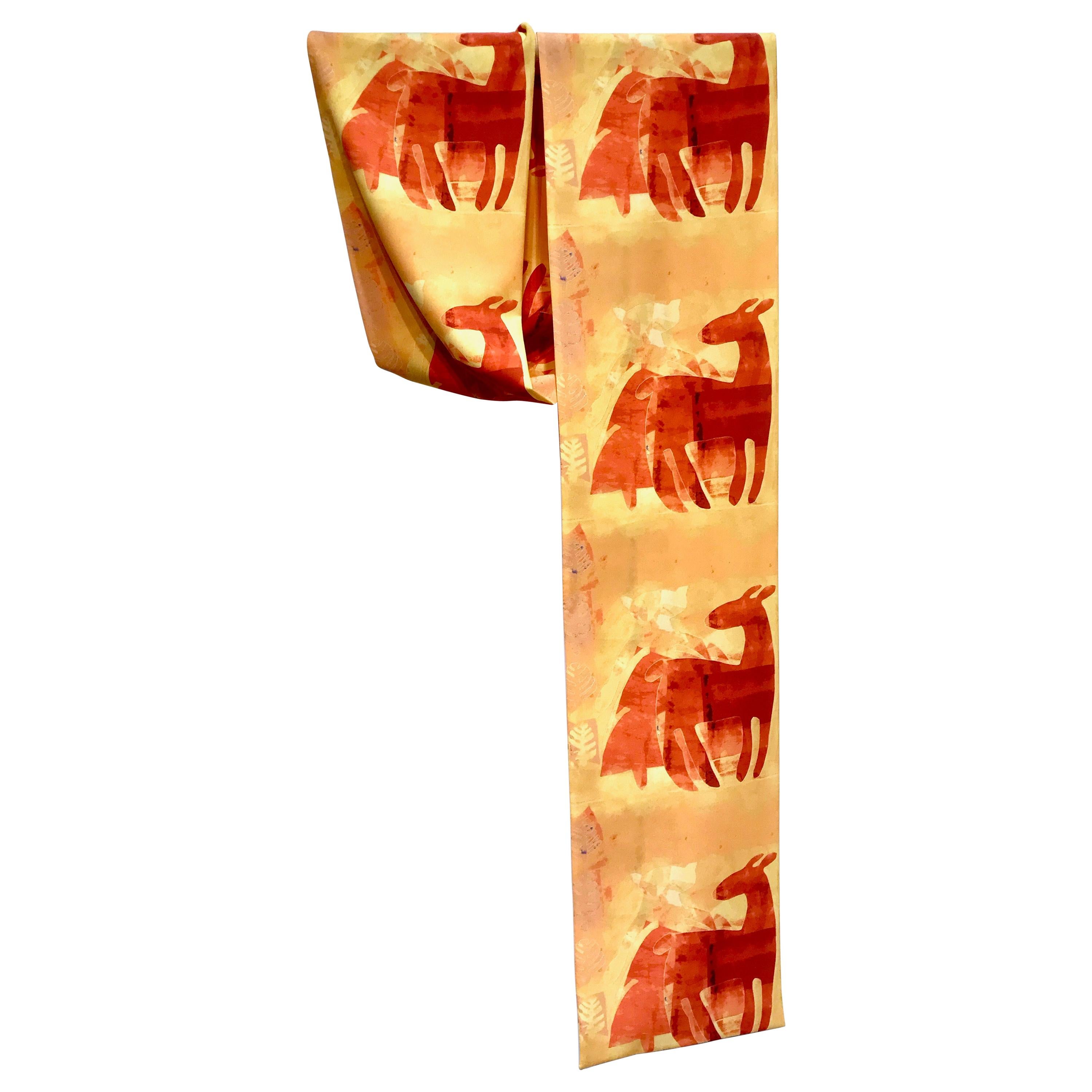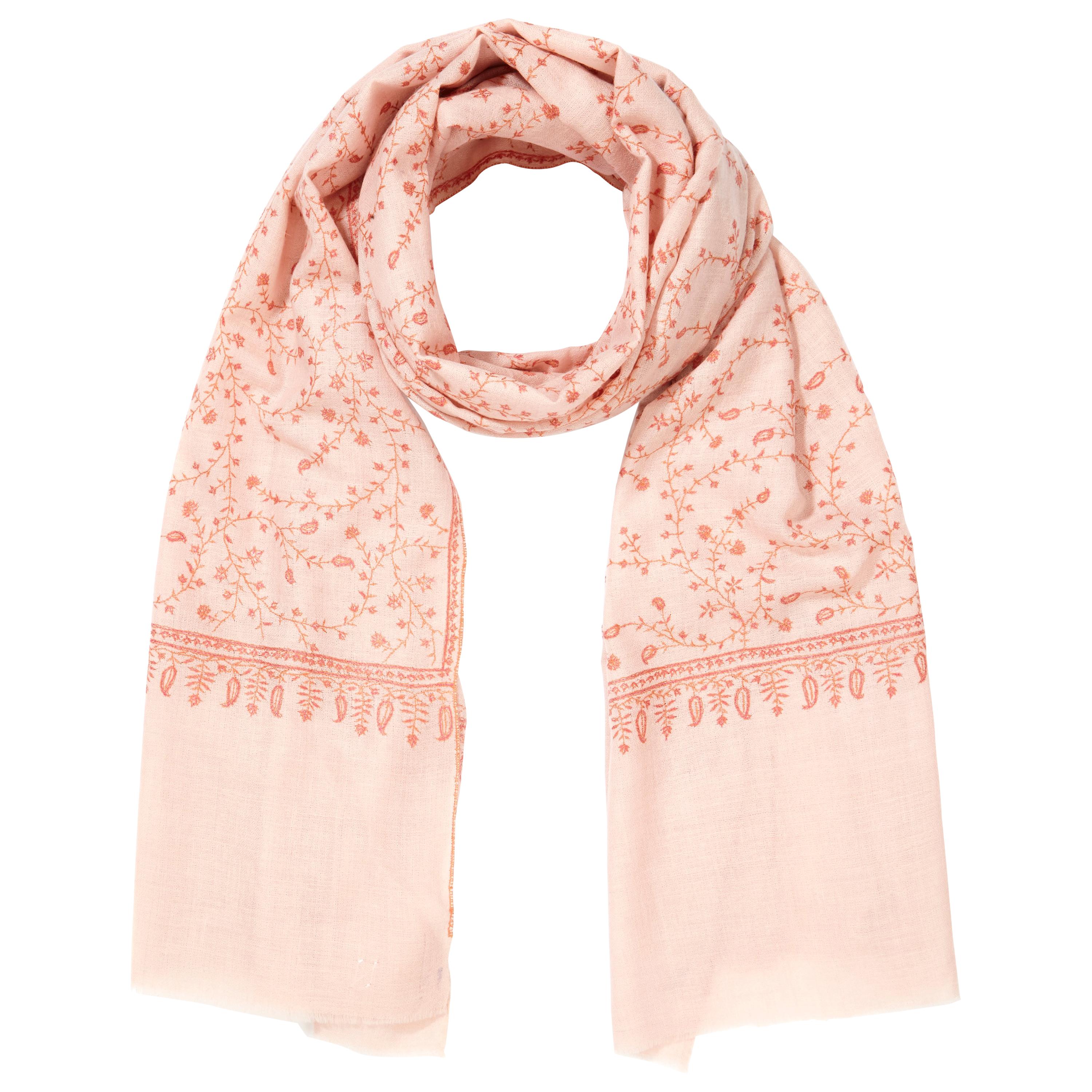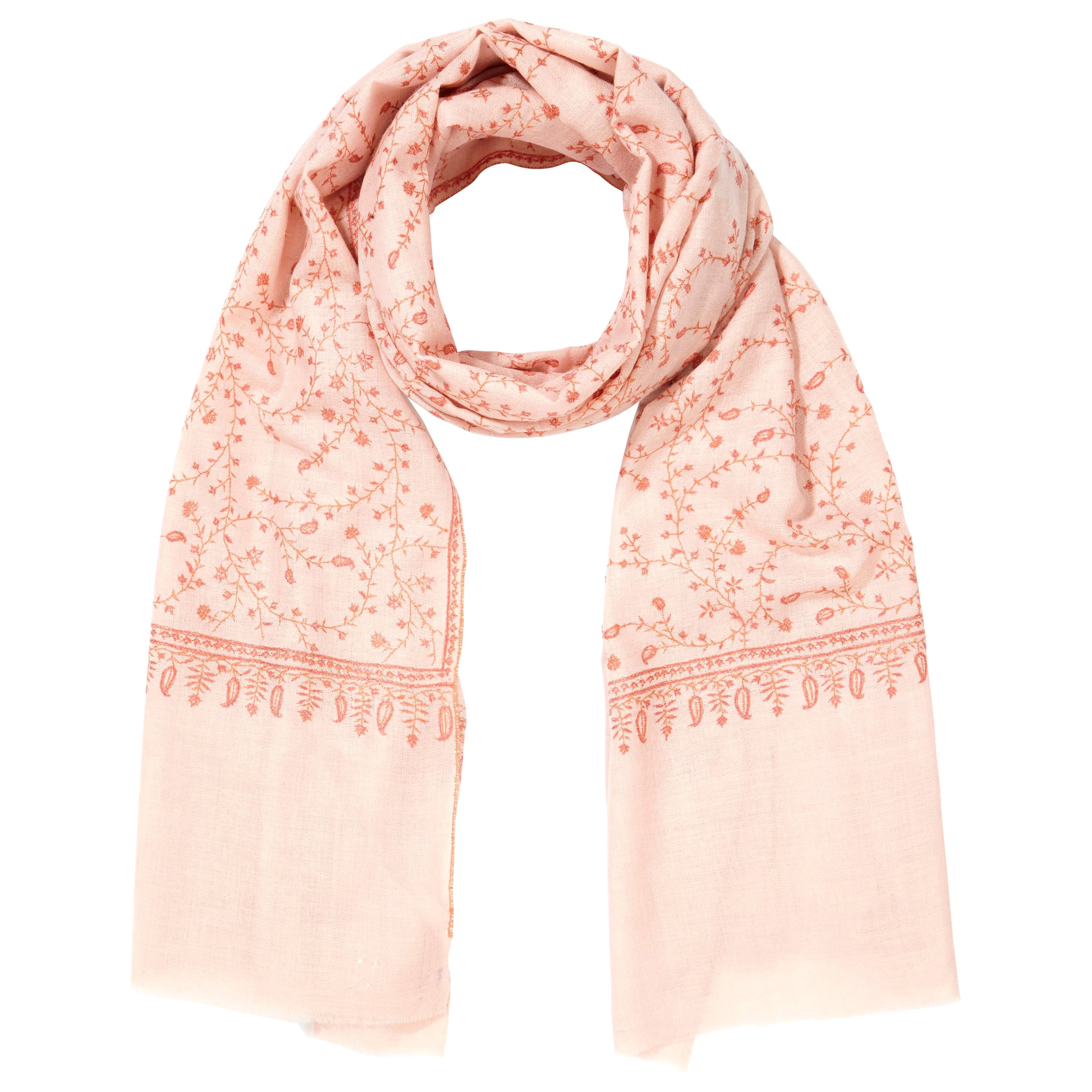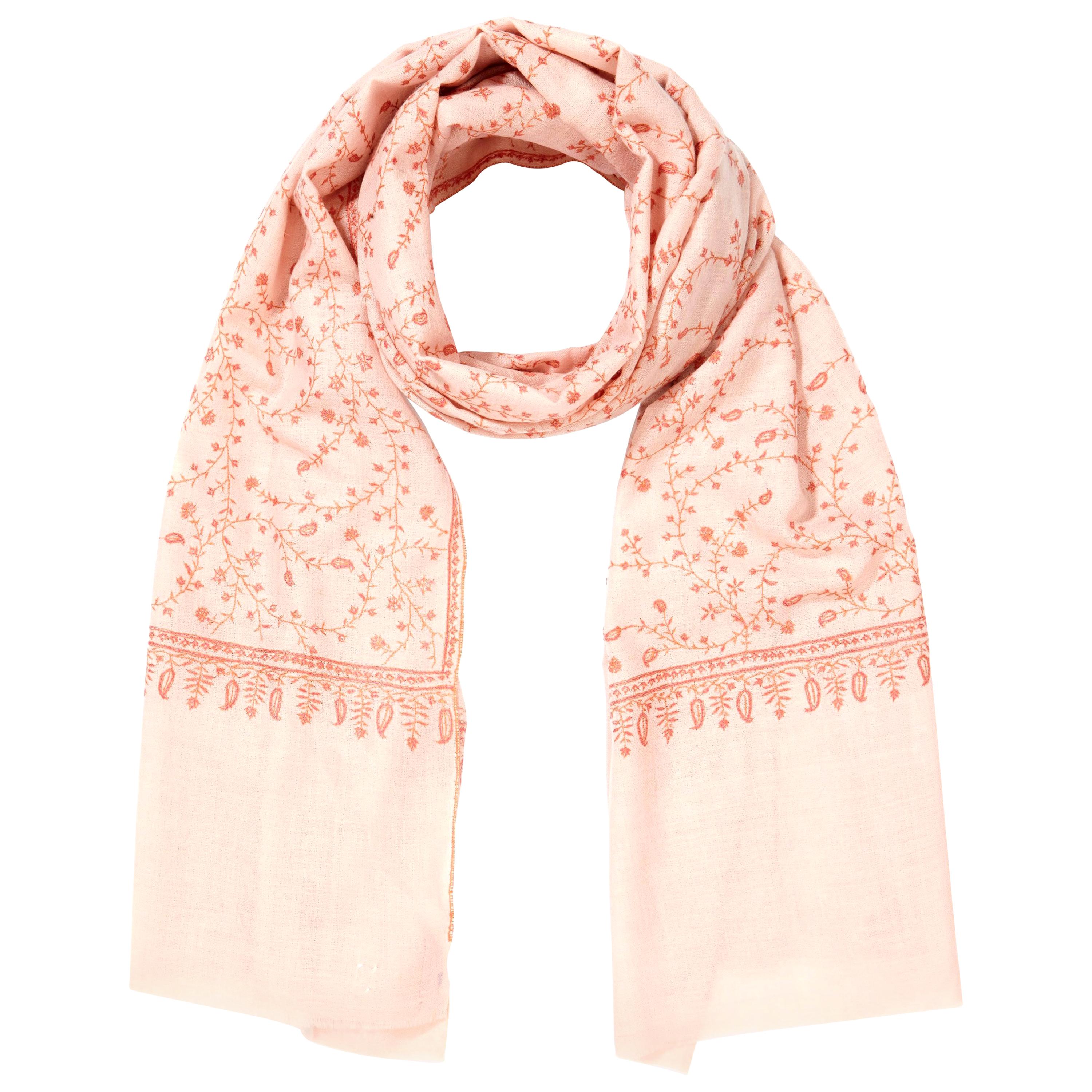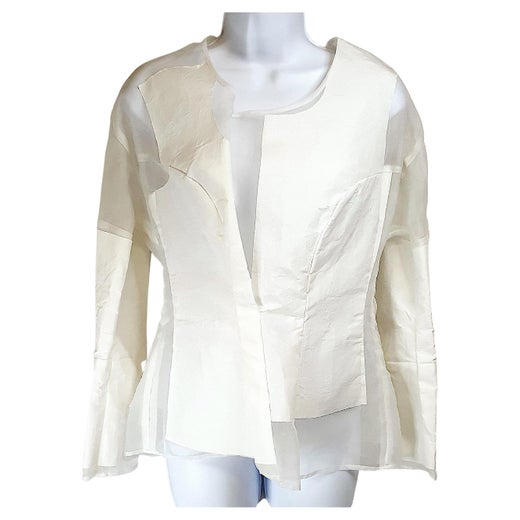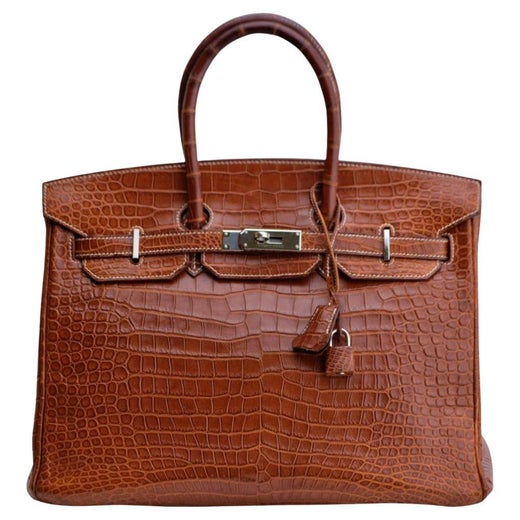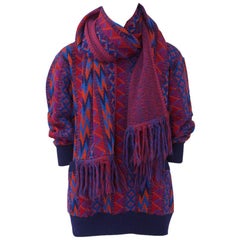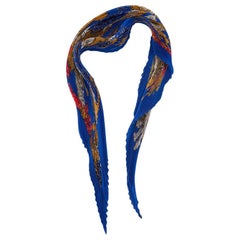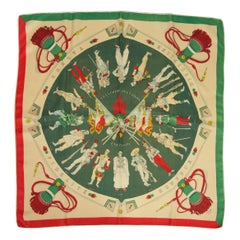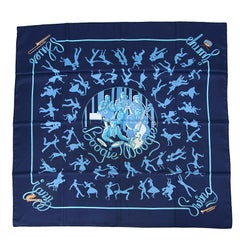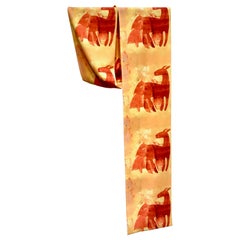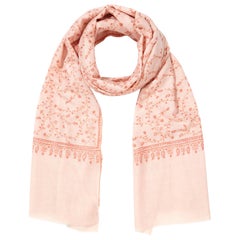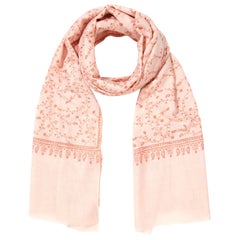2013 Limited Edition Hermes x Comme des Garçons "Quadrige" Carre Scarf
About the Item
- Designer:
- Brand:
- Dimensions:Height: 35.4 in (89.92 cm)Length: 35.4 in (89.92 cm)
- Place of Origin:
- Period:
- Condition:
- Seller Location:Geneva, CH
- Reference Number:Seller: 1DJD08871stDibs: LU56026626042
Rei Kawakubo Comme Des Garcons
Comme des Garçons is one of the world’s most innovative and trailblazing fashion brands, helmed by its inimitable founder, Japanese designer Rei Kawakubo (b. 1942), who has a penchant for breaking fashion and cultural norms.
Perhaps no designer better embodies fashion cool than Kawakubo. And when she makes industry veterans lose their cool, well, that’s a fashion moment. The only living designer apart from Yves Saint Laurent to have a retrospective at the Metropolitan Museum of Art’s Costume Institute, Kawakubo has permanently changed fashion — her designs for widely loved vintage Comme des Garçons dresses, shirts and other clothing and accessories challenge traditional ideas of beauty with a creative and transgressive exuberance.
After studying art and literature at Keio University in Tokyo, Kawakubo worked as a freelance stylist before establishing her own label in 1969. Comme des Garçons — which is also known as CDG — officially launched in 1973, and Kawakubo opened her first store in Tokyo three years later. She has since been instrumental in pioneering many concepts now familiar in contemporary fashion.
One of Kawakubo’s most iconic moves was her introduction of androgynous styles (Comme des Garçons means “like the boys” in French) with asymmetrical, twisted silhouettes that envelope the body. While she told the New York Times that the “basics of clothing lie in men’s fashion,” Kawakubo believes in the concept of humanness in clothes (she titled her spring 1995 show “Transcending Gender”). In the 1970s, when color-blocking was the norm, Kawakubo stuck to her monochromatic color palette dominated by shades of black with uncompromising dedication, although with evocative and powerful use of red and white.
Comme des Garçons is also known for an often shocking take on fashion. Deconstructed tailoring, violently slashed fabric and sculptural shapes are some themes that run through the brand’s collections, but Kawakubo never explains the meaning of her conceptual pieces, which fall somewhere between art and fashion.
For Kawakubo, the body is a mere support, an easel that holds the canvas on which she exercises her formidable creative energy in a perpetual quest to invent a brave new world using fabric, or its equivalent, as her brushstroke. Today's enthusiasts of 1990s fashion revere Kawakubo for her progressive pink plaid grunge dresses, velvet jackets and nylon skirts of the era, which resembled little else back then. They were modeled by the likes of Naomi Campbell and other luminaries of the industry.
Even though the brand has over the years worked with other innovative designers such as Tao Kurihara and Junya Watanabe and has launched more commercial offshoots like PLAY, known by the iconic heart motif with eyes, the premier men’s line Homme Plus and the multilabel Dover Street Market that opened in 2004, the essence of Comme des Garçons remains Kawakubo’s otherworldly and undefinable creations, which are impossible to ignore.
Find vintage Rei Kawakubo shirts, jackets, day dresses and Comme des Garçons clothing on 1stDibs.
Hermès
For Hermès, what began as a maker of leather equestrian goods for European noblemen would eventually grow into one of the most storied fashion labels in the world. In 1837, German-born French entrepreneur Thierry Hermès opened a saddle and harness purveyor in Paris. Gradually, the house extended into accessories and luggage for its riders, and today, in paying homage to its origins, the family-run luxury brand resurfaces horse motifs in everything from clothing and modernist jewelry to pillows and handbags.
The first top-handled bag ever produced by Hermès was the Haut à courroies, which made its debut in 1892. A tall bag secured with a folded leather flap (fastened with bridle-inspired straps), it was designed to transport riding boots and a harness.
As the world made the switch from horse to automobile, the bag adapted, becoming a multifunctional travel satchel instead of a designated saddlebag. Today, 120 years later, the HAC remains in Hermès’s line — and its distinctive flap and clasping straps have laid the groundwork for some of the house’s other iconic bags.
In the 1930s, Robert Dumas (son-in-law to Émile-Maurice Hermès, Thierry’s grandson) designed a smaller, trapezoidal take on the flap bag with a handle and two side straps. Later, actress Grace Kelly, then engaged to Prince Rainier of Monaco, is said to have used one of these bags to conceal her pregnancy during the 1950s. Because she was photographed constantly, the coverage catapulted her handbag to international popularity.
In 1977, Hermès officially renamed the model for her, and the Kelly bag was born. Each Kelly bag takes between 18 and 25 hours to produce, and its 680 hand stitches owe solely to one Hermès artisan.
Robert Dumas was also responsible for another one of the brand’s most iconic offerings: the launch of its first silk scarf on the occasion of Hermès’s 100th anniversary in 1937. Based on a woodblock designed by Dumas and printed on Chinese silk, the accessory was an immediate hit.
Today, vintage Hermès scarves, typically adorned in rich colors and elaborate patterns, serve many functions, just as they did back then. Well-heeled women wear it on their heads, around their necks and, in a genius piece of cross-promotion, tied to the straps of their Hermès bags. Kelly even once used one as a sling for her broken arm.
In 1981, Robert Dumas’s son Jean-Louis Dumas, then Hermès chairman, found himself sitting next to French actress and musician Jane Birkin on a plane, where she was complaining about finding a suitable carryall for the necessary accoutrements of motherhood. After the two travelers were properly introduced, Birkin helped design Jean-Louis’s most famous contribution to the Hermès canon: the Birkin bag, a roomy, square catchall with the HAC’s trademark leather flap top and the addition of a lock and key.
Owing to the brand’s legendary commitment to deft, handcrafted construction, the Birkin is an investment that is coveted by collectors everywhere.
While the Kelly and Birkin may be standouts, gracing the arms of everyone from royal heiresses to hip-hop stars in the past few decades, the handbags are but a small part of Hermès’s fashion offerings.
Since the 1920s, the brand has produced some of the most desirable leather goods in the world. There’s the Constance bag, a favorite of Jacqueline Kennedy, the recently relaunched 1970s-era Evelyne and, on the vintage market, a slew of designs dating back to the 1920s.
Good design never goes out of style. Find a variety of vintage Hermès handbags, day dresses, shoes and more on 1stDibs.
- ShippingRetrieving quote...Shipping from: Lausanne, Switzerland
- Return Policy
More From This Seller
View All1980s French Pullovers
1990s French Scarves
1950s French Scarves
21st Century and Contemporary French Scarves
1990s Italian Scarves
1990s Italian Scarves
You May Also Like
2010s American Scarves
2010s Scarves
2010s Scarves
2010s Scarves
2010s Scarves
2010s Scarves
Read More
The Hermès Passe-Guide Bag Might Not Be as Well Known as the Birkin or Kelly, But It’s Every Bit as Chic
Find out why this under-the-radar piece is so exceptional.
How to Spot a Fake Hermès Birkin Bag
The iconic Birkin bag is much coveted — and often copied. Find out how to tell the real deal from a convincing fake. Of course, you don't have to worry about this on 1stDibs, where every seller is highly vetted.
